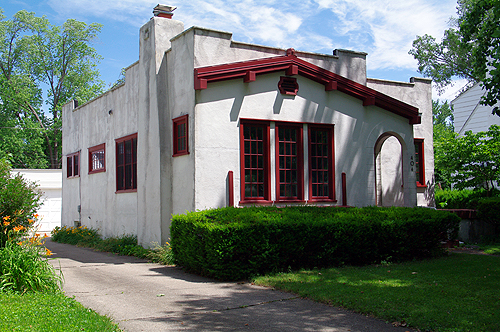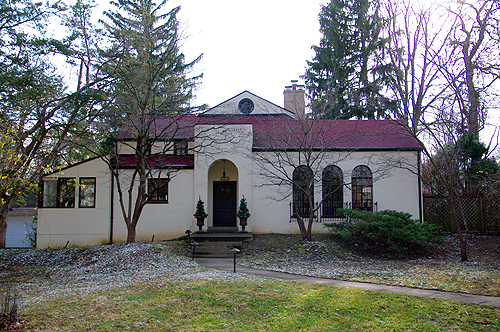Spanish Revival (1915 - 1940)
 |  |
The Spanish Revival style, often referred to as the Spanish Eclectic style due to its broad Hispanic origins, received wide attention after the Panama-California Exposition (1915). The exposition, designed by Bertram Grosvenor Goodhue emphasized the richness of Latin American Spanish precedents to build on the local Mission style interpretations of Spanish Colonial Architecture. Spurred by Goodhue’s work, American architects began to look for inspiration as far as Spain itself, a nation rich in colonial traditional architecture. Spanish Revival houses were most popular in the southwestern states, namely California, Arizona and Texas and parts of Florida – all regions where original Spanish Colonial buildings occurred.
| |
Spanish revival buildings typically have red-tiled low pitched roofs, with little or no eave overhanging, one or more prominent arches placed above a door or a principle window, arched porches, stucco wall surfaces and asymmetrical facades. Some houses have a flat roof with parapeted walls, in combinations of one or two story units, resembling the Pueblo Revival style. Details are borrowed from the Moorish, Byzantine, Gothic and Renaissance movements. Roof tiles are typically either half cylinders, known as Mission tiles or have an S-shape, called Spanish tiles. Arches are often emphasized by adjacent spiral columns, pilasters, carved stonework, or patterned tiles. Other popular features are tile roofed chimneys, brick or tile vents, fountains, arcaded walkways, and round or square towers. | |
